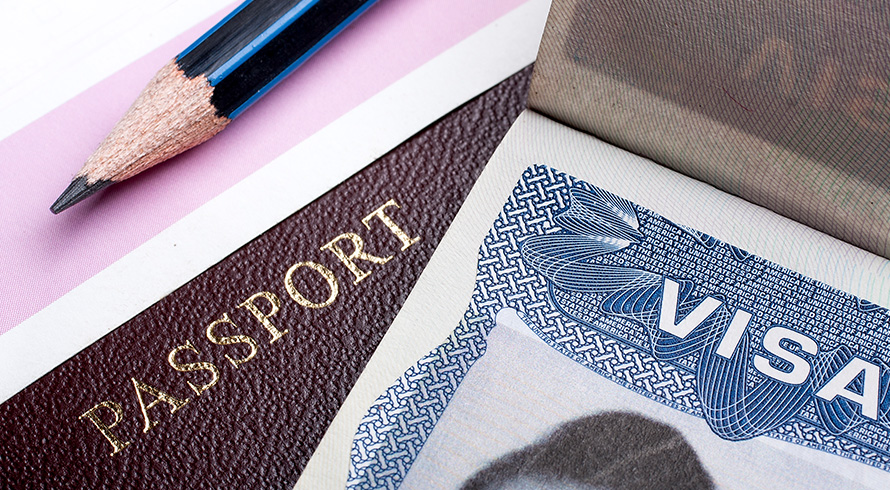Retrospective VAT apportionment: Denial of input tax
At a glance
- Value Added Tax (VAT) systems allow entities to claim input tax credits for the tax borne on goods or services acquired for their business, ensuring no cascading of tax.
- Vendors making both taxable and exempt supplies can only deduct VAT on expenses to the extent of their taxable supplies. The extent of deduction is determined by the South African Revenue Service (SARS) through a binding ruling.
- A recent Supreme Court of Appeal (SCA) judgment in the Mukuru case held that a binding private ruling issued by SARS cannot be applied retrospectively, impacting the vendor's entitlement to deduct input tax on taxable supplies. Proviso (iii) to section 17(1) of the VAT Act prevents retrospective application of ruling-approved apportionment methods.
A vendor that makes both taxable and exempt supplies is only entitled to deduct VAT incurred on expenses to the extent that it makes taxable supplies. This is because the vendor is considered to be the final consumer of goods or services acquired for making exempt supplies. Section 17(1) of the Value Added Tax Act 89 of 1991 (VAT Act) provides that the extent to which VAT is deductible in these circumstances, is determined by the Commissioner for the South African Revenue Service (SARS) in terms of a binding general ruling or a binding private (or class) ruling.
In a recent judgment handed down by the Supreme Court of Appeal (SCA) in Mukuru Africa (Pty) Ltd v Commissioner for the South African Revenue Service (520/2020) [2021] ZASCA (16 September 2021), the SCA held that a binding private ruling issued by the SARS Commissioner to approve an apportionment method to be applied, cannot be applied retrospectively. The judgment impacts on the entitlement of a vendor to deduct input tax in relation to taxable supplies.
The judgment
Mukuru commenced trading in 2014 by providing money transfer, mobile phone credit and
bureau de change services. It therefore makes both taxable and exempt supplies and is required to apportion the VAT it incurs on its expenses in accordance with section 17(1) of the VAT Act.
In its 2017 financial year, Mukuru applied to SARS for approval to apply an appropriate apportionment method. SARS issued a binding private ruling in which it approved the application of a transaction count method. The ruling was made effective from 1 March 2016, the commencement of the financial year in which Mukuru applied for the ruling.
Mukuru requested SARS to make the ruling effective retrospectively from 1 March 2014 when it commenced operations, which SARS denied. Mukuru appealed to the Tax Court which found in favour of SARS. Mukuru then appealed to the SCA. Both the Tax Court and the SCA confirmed SARS’ view that the standard turnover-based method as set out in Binding General Ruling 16 (BGR 16) is the only apportionment method applicable to a vendor until SARS issues a binding private or class ruling that allows a vendor to apply a different method. SARS argued further that proviso (iii) to section 17(1) of the VAT Act expressly precludes SARS from issuing a ruling that applies retrospectively. The SCA agreed with SARS.]
Proviso (iii) to section 17(1) provides that where an apportionment method has been approved by the Commissioner, that method may only be changed with effect from a future tax period, or from another date which the Commissioner considers equitable. However, such other date must be within the vendor’s year of assessment for income tax purposes in which the vendor applied for the ruling.
Counsel for Mukuru pointed out that BGR 16 stipulates that a vendor may only use that method if it is fair and reasonable. Because the BGR 16 method was not fair and reasonable given the nature of Mukuru’s business, Mukuru argued that BGR 16 did not apply to it. Mukuru also pointed out that proviso (iii) to section 17(1) only applies if there was a change in the apportionment method. Since there was no change in the method applied by Mukuru, proviso (iii) did not find application.
The SCA held that the BGR 16 method is a default method in the absence of any alternative method approved by SARS, and that Mukuru therefore “changed” its apportionment method from the default BGR 16 method to the approved transaction count method. Consequently, SARS was precluded from making the ruling effective to apply to prior financial years.
Impact of the SCA judgment
It was common cause that in the circumstances, the BGR 16 method did not yield a fair and reasonable apportionment ratio given the nature of Mukuru’s business, but that the approved transaction count method was an appropriate apportionment method.
The SCA did not consider whether the BGR 16 method was a fair and reasonable method for Mukuru’s enterprise. It held that in the absence of an alternative approved apportionment method, Mukuru was compelled to apply the BGR 16 method. Mukuru was consequently required to apply an apportionment method to deduct input tax in prior years, which had no resemblance to its business or the extent of its taxable supplies, because it did not apply for a ruling when it commenced trading.
Implications
SARS stipulates in its VAT 404 Guide for Vendors that in deciding whether the BGR 16 method is appropriate, the vendor must apply a common sense approach which would be applied by a reasonable person. The method must achieve a “fair and reasonable” result which is a proper reflection of the manner in which the vendor’s resources are applied for making taxable and non-taxable supplies. The SARS statement is in line with the context and operation of the VAT system and the fundamental principle that taxable businesses are entitled to a deduction to the extent that they make taxable supplies.
The BGR 16 method is unfortunately rarely representative of the extent to which a taxpayer applies its resources for making taxable supplies. It requires, for example, that the gross amount of interest and dividends received be included in the denominator of the formula. Generally, no taxable expenses, direct or indirect, are incurred in generating dividends or interest on surplus funds in a bank account. These amounts are included in the formula on the assumption that a vendor applies its resources to generate dividends and interest on the same basis as generating taxable supplies.
The BGR 16 method, which the SCA has now confirmed to be the default apportionment method, hardly ever yields a fair and reasonable result. Vendors therefore generally apply for approval to use an alternative apportionment method which is a fair reflection of their enterprise activities.
Vendors who do not apply timeously for approval for an alternative apportionment method, find themselves in the unfortunate position that they are forced to apply the BGR 16 method to their detriment. A vendor that receives a substantial once-off dividend at its financial year end and only manages to apply for approval of an alternative apportionment method a day after its year end, will not be allowed to apply the ruling retrospectively. Instead, the BGR 16 method will apply as default to include the total dividend in the formula and the vendor will find itself in the unenviable position of not being entitled to deduct a substantial portion of its input tax for the prior financial year, even though no expenses are attributable to the dividend.
In a similar vein, if a vendor obtained approval to apply an alternative apportionment method, but the ruling expires and the vendor omits for any reason to apply for a renewal of the ruling before the end of the next financial year, the vendor will be required to apply the default BGR 16 method. The vendor could be deprived of a significant portion of its input tax deductions even though there was no change in its business operations, only because it omitted to apply timeously for a ruling.
A vendor that applies the BGR 16 method which does not yield a fair and reasonable result, but in favour of the vendor (for example where the vendor has substantial non-taxable activities in respect of which it does not receive any consideration), may also find itself in trouble. The SARS Guide for Vendors stipulates that, although the term “fair and reasonable” will usually be perceived as a subjective concept, vendors applying the BGR 16 method should be objective and consider that the result must be perceived as “fair and reasonable” from the Commissioner’s perspective as well. It therefore appears that, if in SARS’ view the application of the BGR 16 method yields an unfair result in favour of the vendor, SARS will seek to apply a different method retrospectively. However, if the same method yields an unfavourable result, in favour of SARS, SARS is precluded from approving the application of a fair and reasonable method retrospectively by virtue of proviso (iii) to section 17(1).
The purpose of section 17(1) is to clarify the extent to which vendors making mixed supplies are entitled to deduct input tax. It is not an anti-avoidance provision and does not serve an administrative purpose. It also does not seek to impose additional non-deductible VAT on a vendor but ensures that VAT is deducted to the extent that the vendor makes taxable supplies, in accordance with the operation of the VAT system.
The problem is that proviso (iii) to section 17(1) prohibits SARS from approving the application of a fair and reasonable apportionment method to prior financial years. Such a prohibition is in direct contrast with the context and operation of the VAT system which allows an input tax deduction to the extent that a vendor makes taxable supplies. There is no reason to deny an input tax deduction to a vendor in relation to its taxable supplies, even retrospectively. Otherwise, the operation of the VAT system is distorted, and it gives rise to a cascading of tax. Following the judgment in the Mukuru case, the legislature should consider removing proviso (iii) to section 17(1) of the VAT Act.
Bearing in mind that the SCA has confirmed that the BGR 16 method must be applied as a default apportionment method, BGR 16 also requires urgent revision. The inclusion in the formula of the total amount of non-taxable revenue which does not require the application of any taxable resources, does not yield a result which is a fair and reasonable reflection of the application of resources by a vendor.
Until the legislation is amended and BGR 16 is revised, vendors who make both taxable and exempt supplies will have to apply timeously for approval of an alternative apportionment method, or they will face the risk of being burdened by non-deductible VAT on their taxable supplies.
The information and material published on this website is provided for general purposes only and does not constitute legal advice. We make every effort to ensure that the content is updated regularly and to offer the most current and accurate information. Please consult one of our lawyers on any specific legal problem or matter. We accept no responsibility for any loss or damage, whether direct or consequential, which may arise from reliance on the information contained in these pages. Please refer to our full terms and conditions. Copyright © 2025 Cliffe Dekker Hofmeyr. All rights reserved. For permission to reproduce an article or publication, please contact us cliffedekkerhofmeyr@cdhlegal.com.
Subscribe
We support our clients’ strategic and operational needs by offering innovative, integrated and high quality thought leadership. To stay up to date on the latest legal developments that may potentially impact your business, subscribe to our alerts, seminar and webinar invitations.
Subscribe



